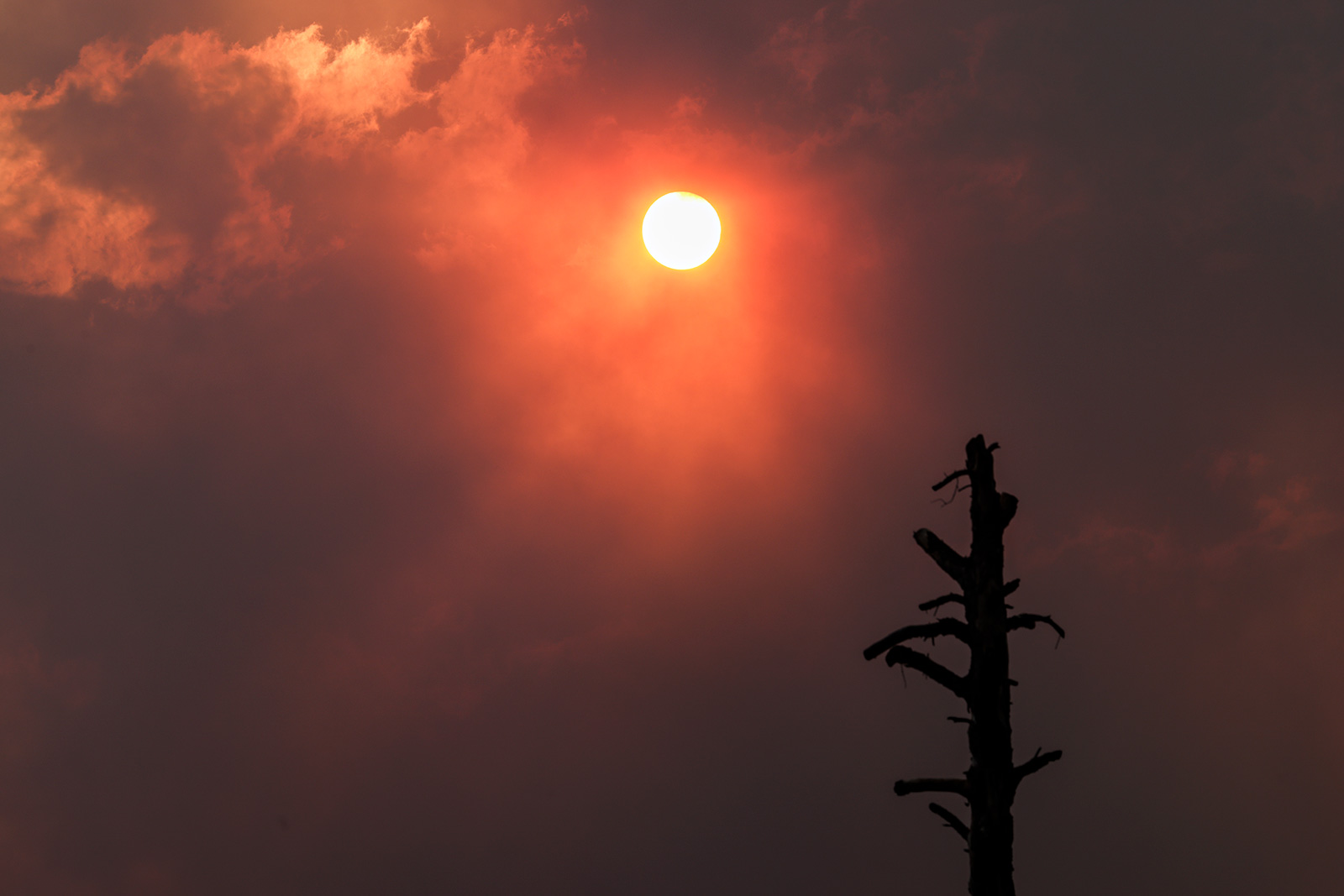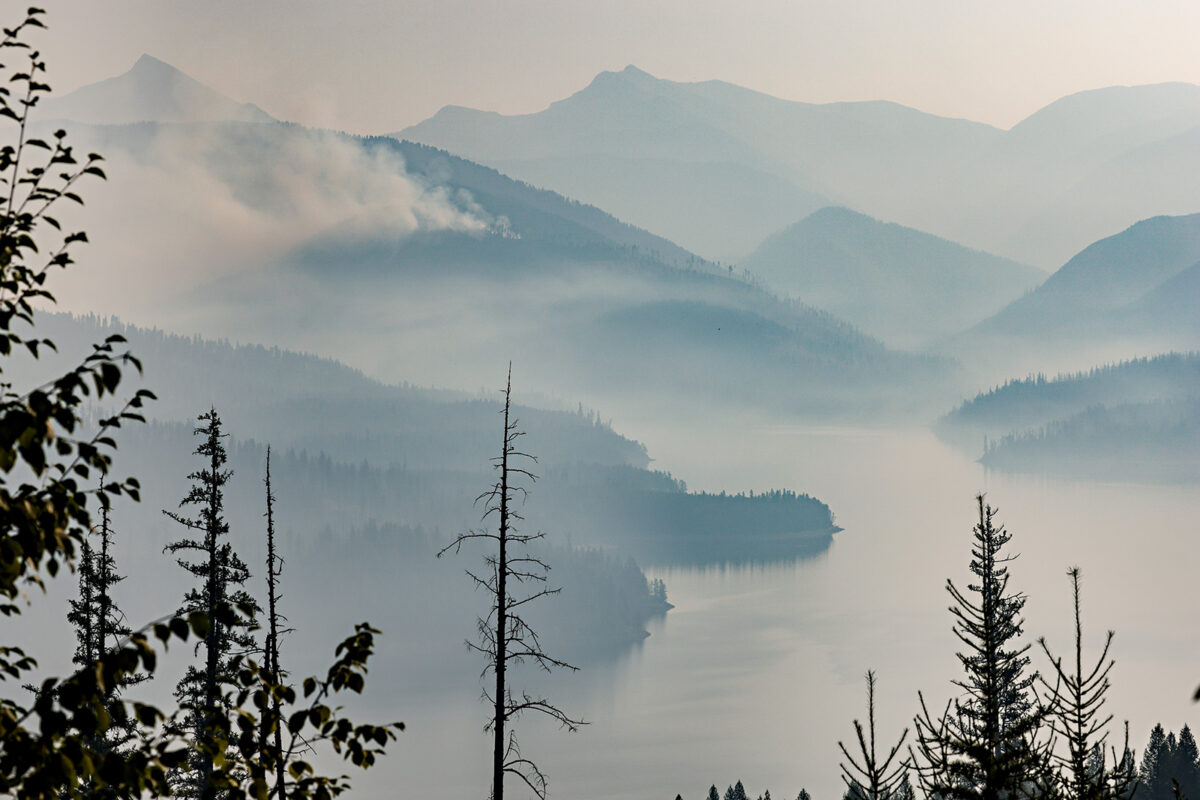The Wildfire Season May Be Over, But the Work is Just Beginning
Controlled, planned burns were key to fire management this year and lay the groundwork for next season
By Anusha Mathur
George Richards knows how quickly a small spark can metamorphose into a raging inferno. He spends every summer enveloped by flames, battling wildland fires during Northwest Montana’s hottest and driest time of year.
“Until you set boots on the ground and that area, a lot of people aren’t going to understand it,” Richards, president of the Montana State Firefighters Association, said. “It’s like a flame; it’s like a blowtorch. When you’re in one, when it’s big enough, it creates its own weather.”
From June through September the Flathead Valley saw 31 lightning-induced fire starts and 12 human-caused starts, burning 14,000 acres. The brunt of the 2023 wildfire season has now passed, and Richards welcomes the increasingly cloudy skies that bring humidity, rain, and the much-needed opportunity for firefighters to catch their breath.
However, for the Flathead Valley, behind-the-scenes forest management and fire prevention work is just beginning. As fire seasons lengthen and intensify, there’s increased pressure on the U.S. Forest Service to prepare for next summer well in advance. This fall, firefighters are planning prescribed burns and community-focused preventative measures.
Northwest Montana contains many of the hotspots that have been identified by the Forest Service as “high-risk firesheds,” landscapes of about 250,000 acres in which ignition can spread and expose communities to wildfire. In 2022, the federal government developed a 10-year strategy that allocates significant resources and funding to mitigate risk in these areas.
“There’s a stronger focus on prescribed fire,” Forest Service Northern Region Public Affairs Officer Mariah Leuschen-Lonergan said. “It’s one of the more effective tools that we have, so we’re really utilizing that tool to the full capacity that we can.”
The goal of prescribed burning is to reduce hazardous fuels on the landscape and increase forest resilience. To accomplish this, fire officials engage in aerial ignition, where helicopters and unmanned aircrafts shoot dollops of fire into a predetermined area. Crews line up around the edge of the fire to maintain control. The result is a calculated removal of the vegetation that fuels fire.
“The landscape that we have in Idaho, Montana and North Dakota evolved with fire,” Leuschen-Lonergan added. “With prescribed fire, you’re mimicking fire’s natural role in the landscape and bringing fire back to the landscape but doing that in a way that is at a lower intensity.”
Flathead National Forest Fire Staff Officer Rick Connell said that the medical connotation of the word “prescribed” is fitting. He likens those who write burn plans to doctors – they analyze the landscape to decide what treatment is required. The forest is a patient receiving care, usually fuels mitigation, habitat management, or removal of decaying materials.
“We’re being smarter about where we fight fire and how we fight fire,” Connell said. “Depending on what the objectives are, you may have multiple treatments to get to the final product that we’re trying to produce.”
This behind the scenes work of prescribed burning is lower profile than crisis firefighting in the summer. However, officials say it’s critical to protecting the Flathead Valley community.
“I get asked, ‘Oh, so the fire season is over, so it must be slow season?’’” Flathead National Forest Public Affairs Officer Kira Powell said. “No, it might actually be the opposite. The rest of the year we do a lot of important work that’s not within the emergency route.”

The Forest Service’s biggest challenge this past wildfire season came from the perfect storm of conditions that made the natural fires in August particularly destructive. How firefighters responded was evidence of prescribed burns paying off.
“This year, we had a really early melt off, we had some really hot days,” Powell said. “That means that all of those other fuels out there were curing and the peak of when they were most likely to burn happened to line up with our big lightning burst.”
The Ridge Fire, Doris Point Fire and Tin Soldier Fire all resulted from these lightning strikes on July 30 and quickly spread, becoming difficult to contain. However, prescribed burns and previous vegetation projects in high-risk regions of the Flathead National Forest equipped the Forest Service with tools to fight them. The preparatory work eliminated fuels and created better pathways for firefighters to enter the region. From a big-picture standpoint, this also reduced firefighting costs.
“The district personnel who spent years working on that project, developing, analyzing, and then implementing, got to watch their work in action,” Powell said. “That break in its pace gives the firefighters wonderful opportunities to do their part to suppress and stop the fire.”
The Ridge Fire ultimately required over 600 firefighters and additional support from an incident management team to suppress. Connell estimates that the bigger fires this season, like East Fork and Ridge, each cost between $25 million to $30 million to manage, while smaller fires cost between $12 million and $15 million.
With days getting shorter and temperatures dropping, the Forest Service has already begun conducting prescribed burns, beginning with Ashley Mountain and Natalia Lake. The Flathead National Forest Service has over 13 more burns planned. Connell said that the Whitefish Municipal unit is one of the main priorities.
Powell said that the list is ambitious and it’s unlikely that weather conditions will allow them to accomplish every planned burn. However, the process of planning and prioritizing prescribed burns is collaborative. The Forest Service not only engages with other governmental organizations, like the Department of Environmental Quality, but also the locals closest to forest land.
“We definitely prioritize areas around communities,” Powell said. “As new projects are being developed, the districts and Flathead National Forest folks make an effort to coordinate, speak with, and solicit input from the folks directly adjacent and near to our projects.”
For the firefighting service, fall is also the time for annual refresher courses, training, and safety certifications. However, Richards emphasized that this preparation is meaningless without concurrent community action.
“Especially in Kalispell, Flathead, the whole area is just booming,” Richards said. “But it’s booming with a lot of people that don’t understand the area, whether they come in from the East Coast or they’re coming in from somewhere else. The beauty is there, don’t get me wrong, but the danger is just a match away in some cases.”
Powell agreed that managing natural fires through prescribed burns is just one piece of the puzzle. Another key part of the Forest Service’s year-round work is minimizing human-caused fire starts.
“Communicating with folks out there in the forest about safe practices and prudent use of fire, being careful and tending campfires, watching your burn piles, and being cautious with fireworks during Fourth of July season,” Powell said. “That’s something you have control over. We know what starts it and we can do better.”